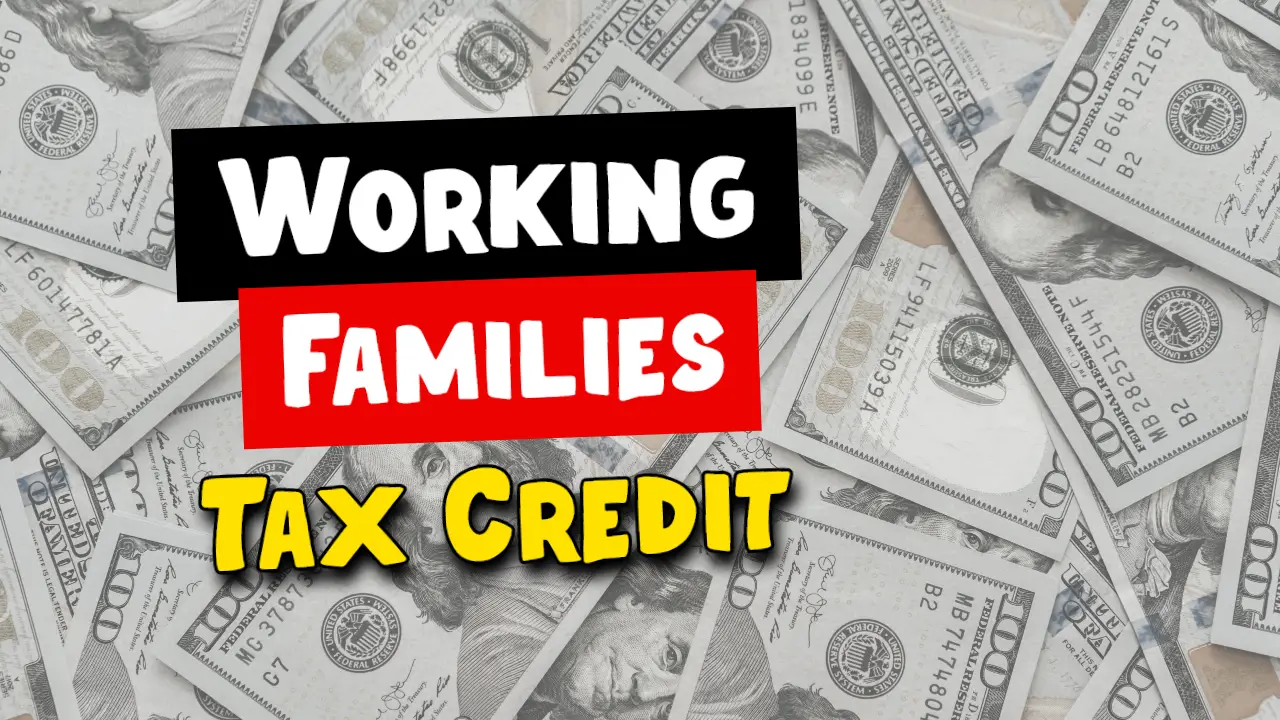The Working Families Tax Credit aims at minimizing taxable income and in many cases generating a refund even if no tax is owed. This credit is especially important for working families who are having a hard time making ends meet as bills pile up, including rent, childcare, food, and health care.
Updates in 2025 have made the program more accessible and more generous, supporting more working families as they make ends meet. This tax credit was designed to make work pay and lighten the tax load on families. It is also a way to encourage people to remain employed by offering additional financial assistance through the tax system.
If people are eligible, they can receive thousands of dollars in deductible credits that go right into their pockets when they file their taxes. Getting a handle on how the credit works is key for anyone below the moderate-income spectrum with a family to support.
Working Families Tax Credit
The Overarching Purpose of the Working Families Tax Credit is to Reduce Poverty and Help People Live with More Stability It can be a significant source of annual income for families with children. The credit is refundable, so families could receive money back even if they owe little or nothing in federal taxes.
People who file their taxes receive a benefit based on their income, family size, and filing status, with the IRS calculating how great a benefit they are entitled to.
Working Tax Credit 2025 Overview
| Department | Internal Revenue Service (IRS) |
| Article On | Working Families Tax Credit |
| Country | USA |
| Eligibility | The child must be of 17 years age |
| Amount | As per eligibility |
| Payment Mode | Direct Deposits and Paper Checks |
| Payment schedule | Monthly |
| Category | Government Aid |
| Official Website | https://www.irs.gov/ |
Eligibility for Working Families Tax Credit
- You must also have had income from work or self-employment at some time during the tax year.
- Children must satisfy age, relationship to the filer, and residency requirements.
- People without children can also qualify, but the income limits are lower and the credit is smaller.
- Have resided in the USA for more than 6 months.
- Investment income needs to be under the maximum allowed, which varies slightly from year to year.
Changes to the Credit in 2025
There are several changes made for 2025 to the Working Families Tax Credit to assist individuals in qualifying for the credit and to increase the amount of credit they can claim. The income limits are higher to account for inflation and growing incomes, so families can make a bit more and still be eligible. Furthermore, the credited amounts themselves have been slightly upped to offer improved support.
Another major difference is the (now) much better application process. Now, however, tax software and the free filing websites that work with the IRS even the paper versions, for that matter make it far simpler to claim the credit without making a mistake. The IRS has stepped up efforts at educating people about this credit, since many may not be aware they are eligible including workers without children or who work part-time.
Filing for the Tax Credit
Those seeking the credit must file a federal tax return, even if they otherwise wouldn’t have to base it on income. They should make sure that their children’s Social Security numbers and other information are entered accurately. If income or the number of members of the household changes from the prior year, that will have an impact on how much credit is available.
Free filing help is offered through IRS programs and nonprofit organizations that can help taxpayers who are unclear about how to complete their forms.
The Effect of the Credit on the Economy
The Working Families Tax Credit does more than simply help families. It’s also good for the overall economy. When families get extra money through this credit, they are almost certain to spend it on things like groceries and other necessary items, which boosts local businesses. It decreases dependence on other government programs and enables additional families to move to a more financially self-sustaining place.
They also have more reason to stay in the workforce as the credit grows with earnings, up to a point. As a result, more people continue working and earn higher wages over time. Credit has also had long-term effects on children, such as an increased likelihood of success in school and employment later in life.
FAQs
Working Families Tax Credit be applied if I do not have children?
Yes, you can still qualify for a smaller credit if you don’t have children. But families with children often get more.
Who is eligible for this credit and what is the income limit?
It varies, depending on how you file your taxes and how many children you have. The 2025 limit is somewhat higher than previously, due to inflation adjustments.
When I file my taxes, will I receive the credit automatically?
No, You must complete the appropriate part of your tax return to receive it. There are many tax filing programs that can walk you through this.



